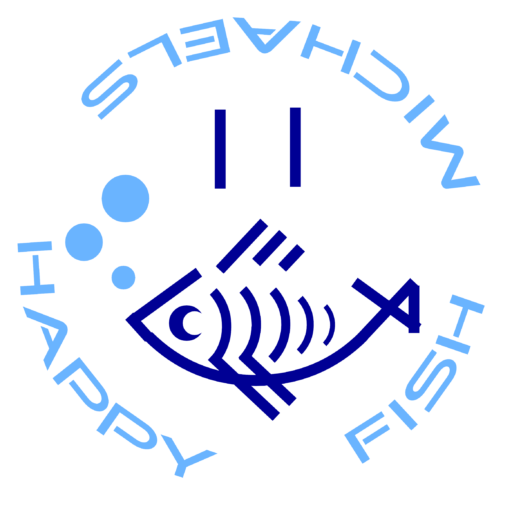- Your cart is empty
- Continue Shopping
New Fish Quarantine Procedures – How to Add New Fish
- African Cichlids, Angelfish, Controlling Growths, Discus, Equipment, Fish, Freshwater, Goldfish, Parasites, Puffer Fish Fresh Water, Quarantine, Saltwater, Treatments
- Posted on
-
by MichaelHF

New Fish Quarantine Procedures – How to Add New Fish
Protozoans (Cryptocaryon/ich, Amyloodinium/velvet) and Metazoan trematodes/flukes are by far the most common parasites found on newly acquired fish. A carefully managed quarantine process can effectively eliminate these parasites before adding the fish to your display tank. This process does not control Brooklynella, Uronema, viruses or internal parasites. These issues however, make up a much smaller number of disease cases in marine fish.

Quarantine tank Requirements:
Tank must be large enough to comfortably handle the number and size of fish for up to 9 weeks.
- Tank should have a filtration system that has completed the nitrogen cycle. Canisters, HOB overflow filters, or appropriately sized sponge filters are acceptable.
- The filtration system must not use carbon or other absorbing/adsorbing filtrants (e.g. Polyfilter) that might absorb copper or medication. NO calcareous rock LIVE or DEAD
- Bare bottom should be used. A saucer with non-absorbing sand can be utilized for wrasses, gobies, blennies or other species which are overly stressed by the bare bottom. Painting the underside of the tank black can also help
- Heater/thermometer
- Removable structure, e.g. PVC pipe may be used to provide hiding places for the fish.
- Ambient light will often be adequate for the QT tank.
- A means to maintain oxygen levels should be available. Air stones and sponge filters are usually adequate.
- A lid should be used to prevent the fish from jumping out of the tank.
- Set salinity level and temperature to the same levels as in your Display Tank.
Days 1 – 2: Observation – let the fish settle in and determine proper diet.
- Set QT temperature to 78 – 80 degrees F.
- Acclimate the new fish to the QT:
- Measure salinity of the water in which the fish arrived.
- Adjust salinity in QT to within 2 ppt of the salinity of the water in which the fish arrived.
- Acclimate the fish to the QT gradually over 45 minutes.
- Observe the fish for any symptoms which might influence the treatment(s) you should administer.
- Determine if the fish are eating adequately to proceed.
Day 2: Begin Copper Treatment
- Add Coppersafe to the QT to achieve a concentration of 2.50 ppm over the course of 24 hours. This can be done in two doses 12 hours apart or multiple smaller doses if you prefer. Coppersafe will not be effective until a concentration over 2.0 ppm is present. A target of 2.50 ppm will allow for fluctuations without the risk of falling below the 2.0 ppm threshold. Hanna Copper checker is the most accurate test to use.
- Never use ammonia removing products or other reducing agents (dechlorinator) when dosing copper. Most products bind copper with an amine to reduce toxicity to the fish. Reducing agents break that bond, releasing free copper that can harm the fish.
- Feed and top off tank water normally.
Days 3 – 32: Continue Copper Treatment
- Monitor copper ppm regularly. If the copper level remains steady day to day, you can test less often, but if the concentration falls below 2.0 ppm, you may need to restart the 30-day count for the copper treatment.
- Monitor water quality parameters as you would for your display tank.
- If the copper or ammonia levels ever exceed guidelines, be prepared to administer water changes (pre dosed with copper) to correct the problem.
Day 34: Copper Done
- Begin copper removal through water changes.
- Binding agents Cuprisorb may be used to hasten the removal process.
- Carbon is usually too slow or ineffective at removing copper and should not be relied upon without adequate monitoring.
Day 35: Praziquantel Treatment #1
- Confirm copper has been removed adequately to drop the concentration to less than 1 ppm. Copper and Prazi should not be administered simultaneously.
- Add Prazipro to the QT per the instructions on the label.
- Ensure the additional oxygenation source is working. This treatment will potentially reduce the oxygen levels within the QT to critical levels without additional air flow.
Day 42, Day 49: Praziquantel Treatment #2, #3
- Add Prazipro to the QT per the instructions on the label, 7 days apart. Spacing needed for these treatments is based on killing new flukes hatching from previously laid eggs. The time interval is not well known. A range of 7 to 9 days seems to give the best results.
Day 64: New Fish QT complete
- Observe fish for 2 weeks after last prazi dose. Note: many public aquariums do not move fish out of quarantine unless they are in the middle of a full copper treatment. This vastly reduces the risk from Cryptocaryon or Amyloodinium. To use that method, substitute a copper treatment for this 2 week observation period, and move the fish out around day 10.
- Conduct a 5-minute fresh water dip if the fish is of a species particularly susceptible to Neobenedenia flukes. If flukes are detected, reduce QT salinity to 50% and hold for an additional 35 days.
- Confirm salinity and temperature of QT and DT are the same, add fish to DT.


